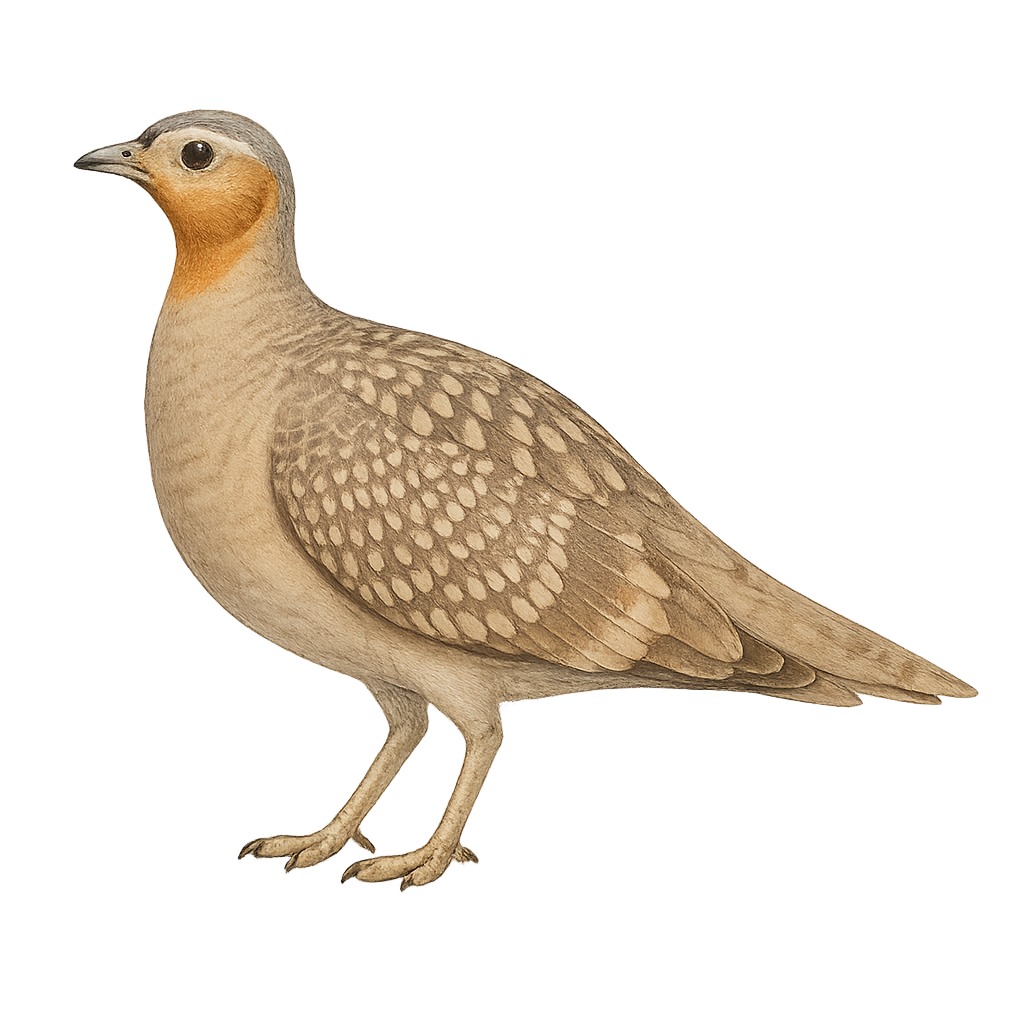Your wildlife photography guide.
Explore the crowned sandgrouse in detail, study its behavior, prepare your shots.
Where to observe and photograph the crowned sandgrouse in the wild
Learn where and when to spot the crowned sandgrouse in the wild, how to identify the species based on distinctive features, and what natural environments it inhabits. The WildlifePhotographer app offers tailored photography tips that reflect the crowned sandgrouse’s behavior, helping you capture better wildlife images. Explore the full species profile for key information including description, habitat, active periods, and approach techniques.
Crowned Sandgrouse
Scientific name: Pterocles coronatus

IUCN Status: Least Concern
Family: PTEROCLIDIDAE
Group: Birds
Sensitivity to human approach: Suspicious
Minimum approach distance: 10 m
Courtship display: April to May
Incubation: 22-24 jours
Hatchings: April to June
Habitat:
Deserts, arid steppes, semi-deserts
Activity period :
Primarily active during the day, with peak activity in the morning and late afternoon.
Identification and description:
The Pterocles coronatus, or crowned sandgrouse, is a medium-sized bird known for its sandy-brown plumage, which provides excellent camouflage in desert landscapes. Its head is adorned with a distinctive crown, giving it its name. This bird is primarily found in the arid regions of North Africa and the Middle East. It is well adapted to dry environments, capable of traveling long distances in search of water. Crowned sandgrouse feed mainly on seeds and small insects. They are often seen in groups, flying swiftly and at low altitudes. Their social behavior is fascinating, with elaborate courtship rituals.
Recommended lens:
400 mm – adjust based on distance, desired framing (portrait or habitat), and approach conditions.
Photography tips:
To photograph the crowned sandgrouse, it is advisable to use a telephoto lens of at least 400mm to capture sharp images without disturbing the bird. The best times to observe them are early in the morning or late in the afternoon when they are most active. Look for water points where they come to drink, as this is where they often gather. Stay discreet and patient, as these birds can be suspicious. Use a tripod to stabilize your camera and achieve precise shots.
From knowledge to field practice
A species profile helps you understand an animal. In the field, the challenge is often different. Remembering your own observations.
The WildlifePhotographer app allows you to:
• record your personal observations
• note locations, dates, and behaviors
• revisit your field references over time
• build a private and long-term field logbook
The app does not provide observation locations.
It helps you organize what you actually observe, with respect for wildlife.

